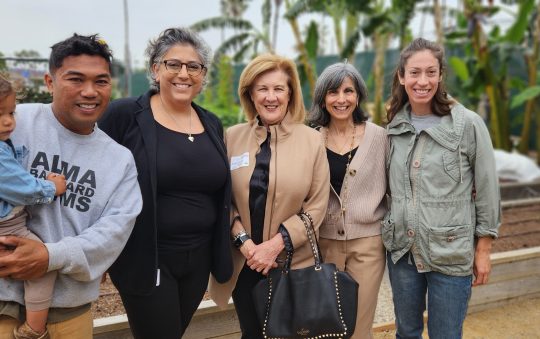
America was built on violence and a propensity for violence is evidenced throughout its history. Many feel that this likely stems from a euro-centric propensity for dominance and greed that contaminates others, but none more than Blacks who singularly bore the horrific burden of chattel slavery.
That said, aided by a troubling collective silence, violence among inner-city Blacks remains high. Of course, like everyone else, Black people denounce violence, but in some inner-city neighborhoods, do physically harm each other with disturbing frequency. However, it is well known that adequate public resources are not being brought to bear to help remedy this extremely serious problem. And ironically, violence is both condemned and perpetuated by those most victimized. However, violence-reduction among Blacks has never been a high priority for state, local, or federal government-in fact, systemic neglect aggravates violence, especially in the inner-city. Without sustainable Black community outrage, strong leadership and political will, the situation will probably not change appreciably.
The Los Angeles Police Department statistics on homicides and violent crime can be highly misleading. There here are pockets throughout Los Angeles, many in Black neighborhoods, where these crimes continue unabated although police data show otherwise. As mentioned, these areas generally do not receive the attention or resources needed to actually reduce violent crimes, and left unattended, conditions worsen. For example, for years, studies show LAPD has consistently understated serious crime, especially in South Central Los Angeles. Thus, in 2015 alone, murders were up 11% city wide.
The term “Black-on-Black violence,” although common among Whites and Blacks themselves, is misleading and should not be used at all. It implies Blacks have a unique, if not genetic, propensity for violent behavior, which is nonsense. Who talks about “White-on-White violence,” so why Black-on-Black violence? The term also feeds the notion that violence among Blacks somehow differs fundamentally from violence among and between other groups.
The underlying factors are complex but clear enough: Violence among Blacks in inner-cities in particular, is a manifestation of racism, poverty, frustration and an absence of hope, nurtured by systemic neglect and aggravated by prolonged silence on the part of Blacks themselves. A poignant and disturbing example of the harmful impact of violence is the apparent steely nonchalance of Black inner-city children towards the pain and suffering of others. They often appear impervious to the constant violence surrounding their lives. Without caring, strategic intervention, a large number of these children’s lives will remain devoid of vision and hope. We all have a responsibility to prevent this from happening.
Violence among Blacks both mimics this nation’s endemic violence and reflects slavery’s crippling legacy. Slavery and psycho-social conditioning go hand-in-hand as antecedents of self-hate that is most evident in inner city young Black males. Denial of the significance of these factors- particularly by middle-class Blacks- tends to deflect a critically needed focus on the problem.
America’s endemic violence, and entrenched materialism and individualism have been internalized by Blacks even though doing so is not in their best interest. In short, they have internalized the White majority’s values without full access to its benefits.
The following factors contribute to Black violence.
Having internalized America’s values, many Blacks are reluctant to challenge White privilege; for them, to do so (without alternative values)-is tantamount to challenging themselves. Hence the ambivalence and difficulty in shedding second-class status, an affliction that renders many Blacks complicit in their own oppression. Other race-based factors contributing to the “less than White” affliction include: self-hate and low self-esteem; Black youth’s dysfunctional behavior; public policy and practice that actually foster injustice; inequity, and inequality in public schools’ failure to educate Black children, with impunity. A growing chasm between middle-class and poorer Blacks is also a major obstacle in Black’s struggle for freedom and justice.
Yes, Blacks know race matters, but many are in denial: Fearing loss of material gains, and/or status, they opt out of the fight for civil and human rights. Nonetheless, our storied resilience throughout history can never be overstated and we must see the reduction of violence as not only possible, but essential.
New alternative strategies for reducing violence among Blacks should first include long term partnerships among and between local Black leaders, communities, parents and schools, then, with other community groups and law enforcement
Common ground cannot be assumed, it must be explicit with bottom-to-top accountability as an integral component in any community empowerment effort. Reducing Black violence also requires that parents and concerned others be part of planning and implementing solutions. Remember, when it comes to schools, jobs, etc., poor people in the inner city still see little, if any change in their daily lives.
Ultimately, existing conditions reflect what any community allows or does not allow. Race-based systemic barriers must be constantly challenged, never be overlooked or minimized. Also, Black leadership must be held accountable for representing the interests of all constituents; in multi-ethnic communities, Blacks’ concerns are often overlooked or minimized.
Statistically, violence in Los Angeles and other large urban cities may ebb and flow, but for many Blacks, especially those in the poor neighborhoods, things have not changed. In the final analysis, contingent on effective leadership and a broad spectrum of community engagement, i.e., a Black united front(s)- Black people must lead and sustain the struggle to reduce violence and reclaim safe neighborhoods to which they are entitled.






